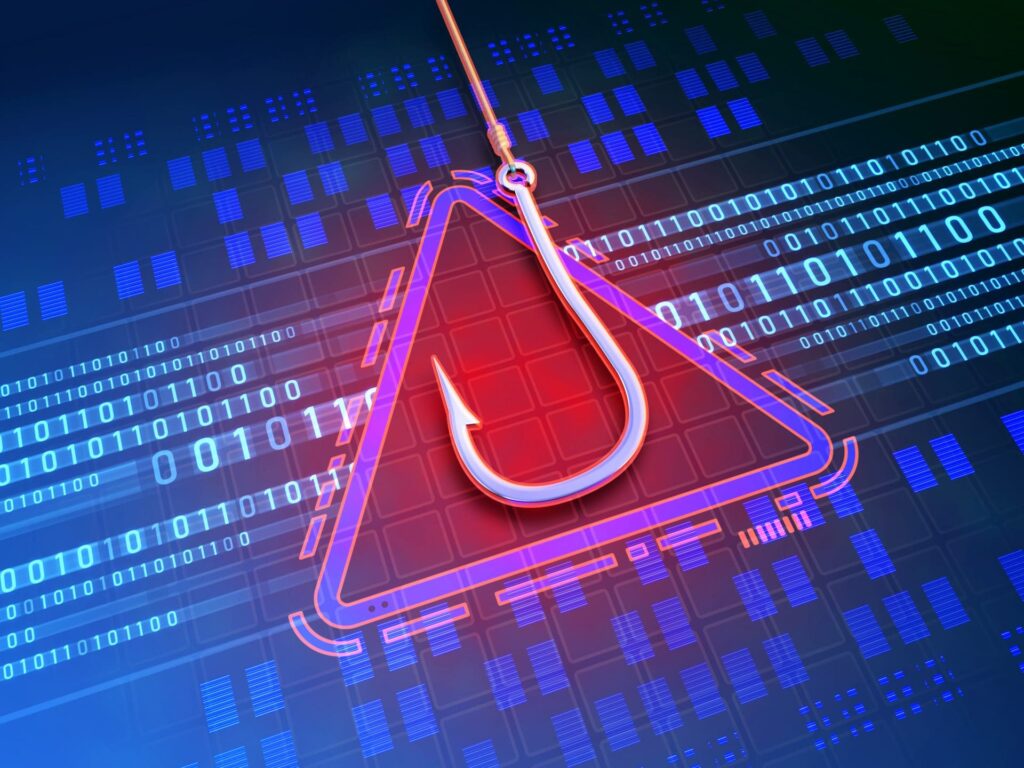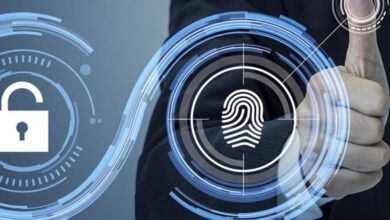In the interconnected world of today, the significance of robust cybersecurity cannot be overstated. As we step into 2023, the landscape of cybersecurity threats continues to evolve, making it crucial for individuals and organizations to stay abreast of the top Cybersecurity threats for 2023 to ensure robust protection.
Top Cybersecurity Threats for 2023
Anticipated Top Cybersecurity Threats for 2023 include phishing attacks, ransomware attacks, cloud security breaches, the misuse of deepfake technology, and Internet of Things (IoT) vulnerabilities.
Phishing Attacks: A Brief Overview
-
What is Phishing?
Phishing is a cybercrime where attackers impersonate legitimate entities to trick individuals into revealing sensitive information like passwords or credit card numbers. It often involves sending fake emails or messages that seem trustworthy, urging recipients to click a malicious link or download a harmful attachment.
-
Types of Phishing
Email Phishing: Fraudulent emails appear to be from reputable sources, containing links to fake websites to harvest personal information.
Spear Phishing: Personalized phishing attempts targeting specific individuals or organizations.
Smishing and Vishing: Malicious text messages (smishing) or phone calls (vishing) aim to steal personal information.
-
Impact
The consequences of phishing include identity theft, financial loss, and emotional distress for individuals, and financial and reputational damage for organizations.
-
Protection
To safeguard against phishing, individuals and businesses should be educated about recognizing phishing attempts. Implementing email filters, regular system updates, and multi-factor authentication enhance security defenses against phishing.
Ransomware Attacks: A Concise Explanation
Ransomware attacks involve malicious software encrypting files or systems, denying access until a ransom is paid. This cybersecurity threat causes significant data loss, financial damage, and operational disruption, impacting individuals and organizations alike.
-
How Ransomware Works
Infection: The ransomware infects a computer, often through phishing emails or exploiting vulnerabilities in software.
Encryption: The ransomware encrypts the user’s data or entire system, making it inaccessible.
Ransom Demand: Attackers demand a ransom, threatening to delete the files or publish sensitive data if not paid.
Types of Ransomware
Crypto Ransomware: Encrypts valuable files and demands a ransom for the decryption key.
Locker Ransomware: Locks the user out of their device, demanding payment for restored access.
Impact of Ransomware Attacks
Victims of ransomware face potential data loss, financial cost, downtime, and reputational damage. Businesses may experience an operational halt, leading to significant revenue loss and possible legal ramifications.
Protection Against Ransomware Attacks
Regular Backups: Consistently back up data to ensure it can be restored in the event of an attack.
Update and Patch: Keep all software and systems updated to minimize vulnerability exploits.
Employee Education: Train employees to recognize and avoid malicious links, attachments, and websites.
Implement Security Measures: Utilize antivirus software, firewalls, and email filters to enhance security.
Cloud Security Breaches: A Brief Insight
Cloud security breaches occur when unauthorized entities gain access to confidential data stored online in cloud service platforms. These breaches can lead to data leakage, unauthorized data access, and various other malicious activities, causing significant harm to individuals and organizations.
-
How Cloud Security Breaches Happen
Weak Credentials: Often, invalid usernames and passwords provide easy access for hackers.
Misconfigured Cloud Settings: Incorrect cloud settings can inadvertently expose private data to the public.
Phishing Attacks: Cybercriminals may use phishing to obtain cloud login details.
-
Impact of Cloud Security Breaches
The effect of a cloud security breach is manifold:
Data Loss: Confidential data may be lost or stolen.
Financial Damage: Companies may face financial loss due to the violation.
Reputational Harm: Breaches can lead to significant reputational damage and loss of customer trust.
-
Protection Against Cloud Security Breaches
Robust Authentication:
Implementing multi-factor authentication can significantly enhance cloud security by adding an extra layer of protection beyond just passwords.
Regular Audits and Monitoring:
Continuous monitoring and regular audits can help in identifying and addressing vulnerabilities promptly.
Employee Training:
Educating employees about the potential risks and best practices for cloud security is crucial.
Use of Encryption:
Encrypting data stored in the cloud ensures it remains protected, even if unauthorized access occurs.
Deepfake Technology: A Quick Overview
Deepfake technology uses artificial intelligence to create hyper-realistic but entirely fake content. By manipulating or fabricating visual and audio data, deepfakes present things that never actually occurred.
-
How Deepfakes Work
Deepfakes employ machine learning algorithms and neural networks to mimic real people’s voices, facial expressions, and behaviors, producing deceptive videos and audio recordings.
-
Impact of Deepfake Technology
The impact of deepfakes is far-reaching:
Misinformation: They can spread false information, causing confusion and misleading people.
Security Risks: Deepfakes pose significant security threats, including identity theft and fraud.
Damage to Reputations: Individuals and organizations can suffer reputational harm from malicious deepfakes.
-
Protection Against Deepfake Technology
Technology Solutions: Employ tools and software designed to detect deepfake content.
Public Awareness: Educate people about deepfakes and encourage critical assessment of media content.
Regulation: Support laws and regulations that address the challenges posed by deepfake technology.
Common IoT Vulnerabilities
Inadequate Device Updates:
Many IoT devices lack regular security updates, leaving them susceptible to attacks.
Weak Authentication Mechanisms:
Simple or default passwords make IoT devices an easy target for unauthorized access.
Lack of Encryption:
Unencrypted data can be intercepted, leading to potential data breaches.
Impact of IoT Vulnerabilities
IoT vulnerabilities can have serious repercussions, including:
Data Breaches: Sensitive data can be stolen, leading to financial and reputational damage.
Unauthorized Access: Attackers can gain control over IoT devices for malicious purposes.
Network Compromise: Vulnerable IoT devices can be used to compromise entire networks.
Protection Against IoT Vulnerabilities
Regular Updates:
Ensure all IoT devices receive timely security updates and patches.
Strong Authentication:
Implement robust authentication mechanisms to prevent unauthorized access.
Data Encryption:
Encrypt data transmitted by IoT devices to safeguard it from interception.
AI and Machine Learning Threats
AI and Machine Learning, while offering numerous benefits, also present new cybersecurity threats.
Insider Threats
Even trusted insiders can pose significant cybersecurity threats inadvertently or maliciously.
Supply Chain Attacks
Supply chain attacks are a growing concern as cybercriminals target less-secure elements in the supply chain.
5G Network Vulnerabilities
5G networks, while offering increased speed and connectivity, introduce new vulnerabilities.
Remote Work Vulnerabilities
The increase in remote work amplifies risks related to home network security.
The Importance of Cybersecurity Awareness and Training
Promoting awareness and regular training can substantially bolster an organization’s cybersecurity posture.
Conclusion
As we navigate through 2023, understanding and mitigating these Top Cybersecurity Threats for 2023 is paramount for safeguarding valuable data and infrastructure. Proactive measures, continued vigilance, and comprehensive security strategies are essential in this endeavor.
FAQs for Top Cybersecurity Threats for 2023
How can organizations protect against phishing and ransomware attacks?
Through regular backups, employee training, advanced email filtering, and updated security software.
Are IoT devices vulnerable to cyberattacks?
Yes, especially if not regularly updated and secured.
How can one protect against deepfake threats?
By staying informed and utilizing advanced detection tools.
Is remote work contributing to increased cybersecurity threats?
Yes, especially if home networks are not adequately secured.
Rate our Article (Top Cybersecurity Threats for 2023 | A Comprehensive Guide)How much do you like our Article?







